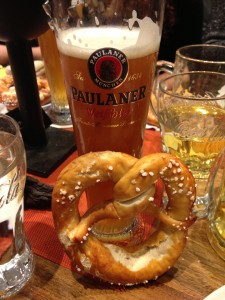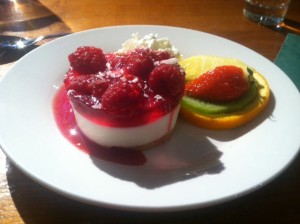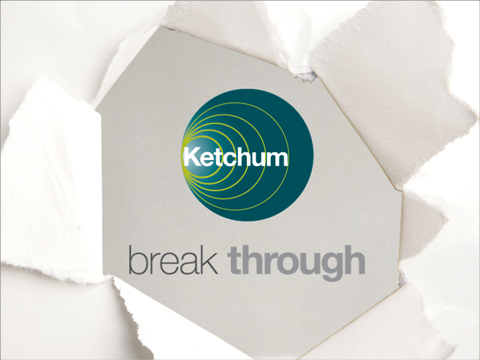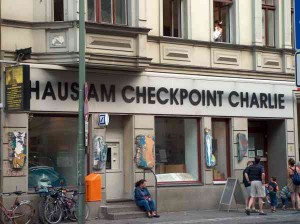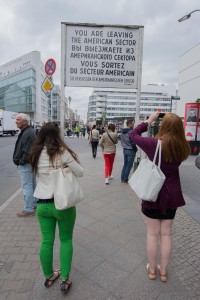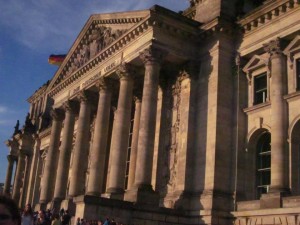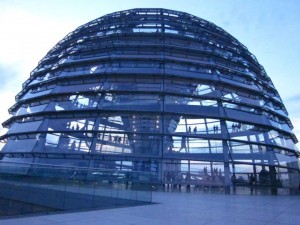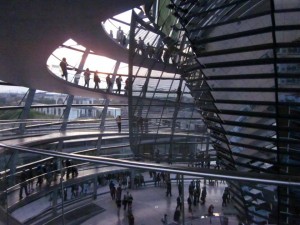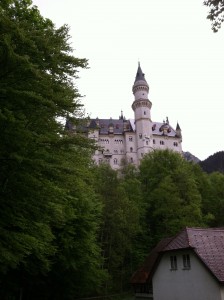by Sara Tallerico
Germany is renowned for its heavy, substantial regional food. Local cuisine is strongly influenced by past immigration, but the dishes are much more simplified. Berliners prefer their foods to be filling rather than over-fussy. Cooking in Berlin is simple and down-to-earth, and the meals are hearty and satisfying.
Berliners begin their day with a typical breakfast of cold meats, cheeses, fresh fruit and an array of rolls and bread. Some accompany their meal with orange juice, apple juice, coffee or hot tea, others with beer. Time with friends and family is valued much more. Breakfast is a time for relaxation, and they want to maximize every minute they have together.
Traditionally, Germans eat their main meal during the day between 12and 2 p.m. This meal is usually a warm, hearty dish. At Maximilians, a restaurant with a cozy brewery atmosphere, the waiter suggested some of the Point Park students experience a typical Berlin lunch, meatballs. He said they were a “very traditional and popular dish in Berlin.” The meatballs were exactly what diners would expect when thinking of a German dish. They were hearty, satisfying, warm and delicious. The dish consisted of two large meatballs served with mashed potatoes and carrots. Berlin meatballs are a perfect example of the three major staple foods in Germany: meat, potatoes and vegetables.
Germans enjoy their evening meal later on in the day, usually between 7 and 8 p.m. This meal is similar to a typical German lunch, hearty and warm. However, the portion size is usually smaller.
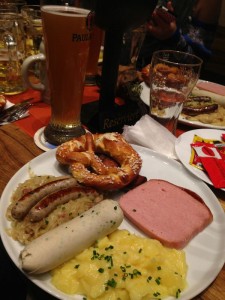
A protein-packed meal in Munich with a variety of meat, potatoes, pretzels, and sauerkraut.
(photo by Richelle Szypulski)
A favorite dinner in Berlin members of the Point Park group tried was Käsespätzle, otherwise known as cheese spaetzle. Spaetzle is an egg noodle that is extremely popular in all parts of Germany. Germans prepare this traditional pasta in a plethora of ways. However, cheese spaetzle seems to be the most desired in this country. The dish is typically served with a generous portion of spaetzle with melted cheese and topped with fried onions. Recent Point Park University graduate Richelle Szypulski described the dish as “similar to gnocchi pasta, but delicious in a melt-in-your-mouth way.”
Point Park students and faculty had a variety of group dinners during their time in Germany, reflective of the different food in the cities and Salzburg. Main courses for the dinners were Turkey with creamed mushrooms and herb rice, fresh pork wiener schnitzel with potato-radish salad in Berlin; Munich white sausage, rostbratwurst, meat loaf, sauerkraut, potatoes and pretzel, and jagerschnitzel (grilled pork loin with mushrooms, vegetables and pasta in Munich; and pan-fried breaded chicken with potato-cucumber salad in Salzburg. And the group experienced the traditional German breakfast at hotels in Berlin and Munich during the trip, complete with scrambled eggs and sausage, of course, as well as bacon. And it was included in the room charges, which was wonderfuland helped students’ expenses.
Now time for the best part: dessert in Berlin. After a filling dinner, Germans usually make sure they save room for a delicate treat. A very favored dessert is cheesecake, although some of the group dinners included apple strudel, chocolate mousse and raspberry yogurt cream cake. German cheesecake is typically made with Quark cheese. For variety, berries such as raspberries or blueberries can be added. It truly is the perfect ending to a delicious meal.
